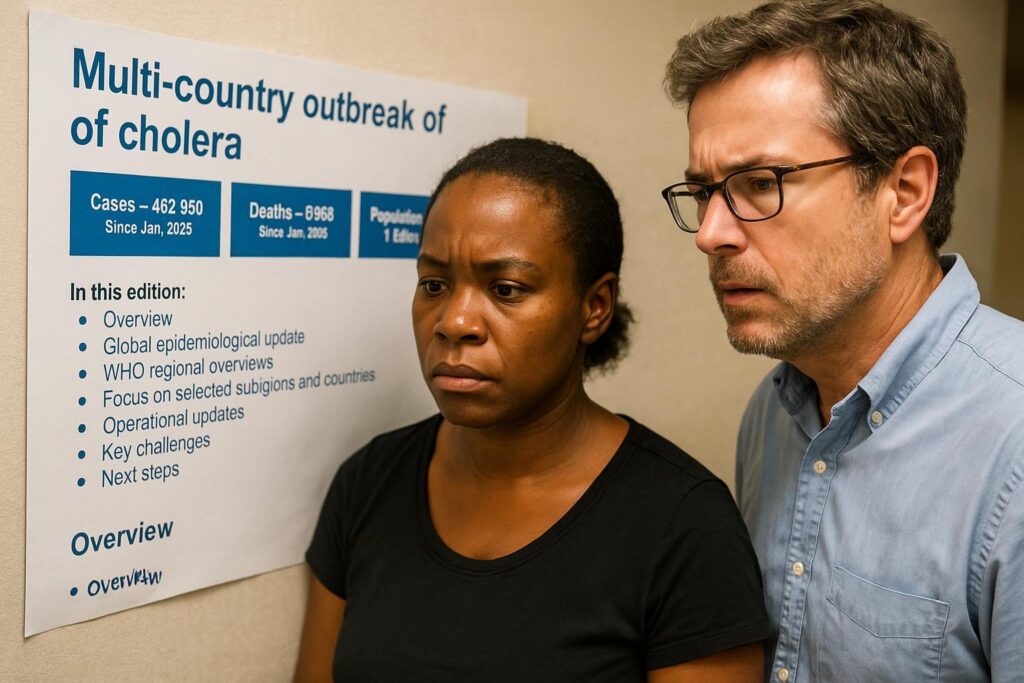Global Cholera Landscape 2025
From January to August 2025, cholera infected nearly 463,000 people and claimed almost 5,900 lives across 32 countries, according to WHO Situation Report 30. The Eastern Mediterranean registered the highest toll, with Africa following closely in both cases and deaths.
No infections were recorded in Europe during the period, highlighting the enduring disparities in water safety and sanitation between continents that still frame the disease’s reach.
Numbers Behind the Headlines
August alone saw 57,215 new cases and 758 deaths worldwide, marking month-on-month declines of 16% and 22% respectively. Epidemiologists caution, however, that a single month’s dip does not yet signal a sustained downward trend.
Health ministries are still reporting hotspots in riverine settlements, refugee corridors and urban fringes where clean water remains scarce and surveillance patchy.
Oral Cholera Vaccine Shortage
WHO recommends a five-million-dose emergency stockpile; yet in August the reserve averaged just 2.6 million doses, squeezed by simultaneous requests from multiple regions.
To stretch supplies, the International Coordinating Group maintains the single-dose strategy introduced in 2022, despite evidence that two doses confer longer protection. Negotiations with manufacturers in India and South Korea are underway to lift output before the 2026 rainy season.
African Cholera Response Measures
Across sub-Saharan Africa, governments are scaling up chlorination points, deploying mobile laboratories and intensifying cross-border data sharing.
In Congo-Brazzaville, the Ministry of Health has pre-positioned treatment kits along the Congo River and launched radio jingles on hand-washing, initiatives praised by WHO country officers as ‘swift and community-minded’.
Neighbouring states, including the Democratic Republic of the Congo and Cameroon, have signalled intent to synchronize vaccination drives once additional doses arrive.
Youth-Led Water Innovation
Young engineers from Brazzaville to Nairobi are prototyping low-cost solar water purifiers fashioned from locally sourced glass tubing and charcoal, cutting bacterial loads by up to 99% in pilot villages.
Social media campaigns under the hashtag ‘CleanSource’ share troubleshooting videos, accelerating adoption and nurturing a pan-African network of innovators keen to turn science projects into scalable public-health solutions.
Maintaining Vigilance
Experts stress that climate-induced floods and protracted conflicts keep the risk curve steep. Continuous funding for surveillance, rapid diagnostics and community engagement is viewed as the safest hedge against another sharp global upswing.
‘We have the knowledge to curb cholera; the challenge is sustaining momentum,’ notes Dr. Lorna Mbeki, epidemiologist at the African Union’s health agency.


